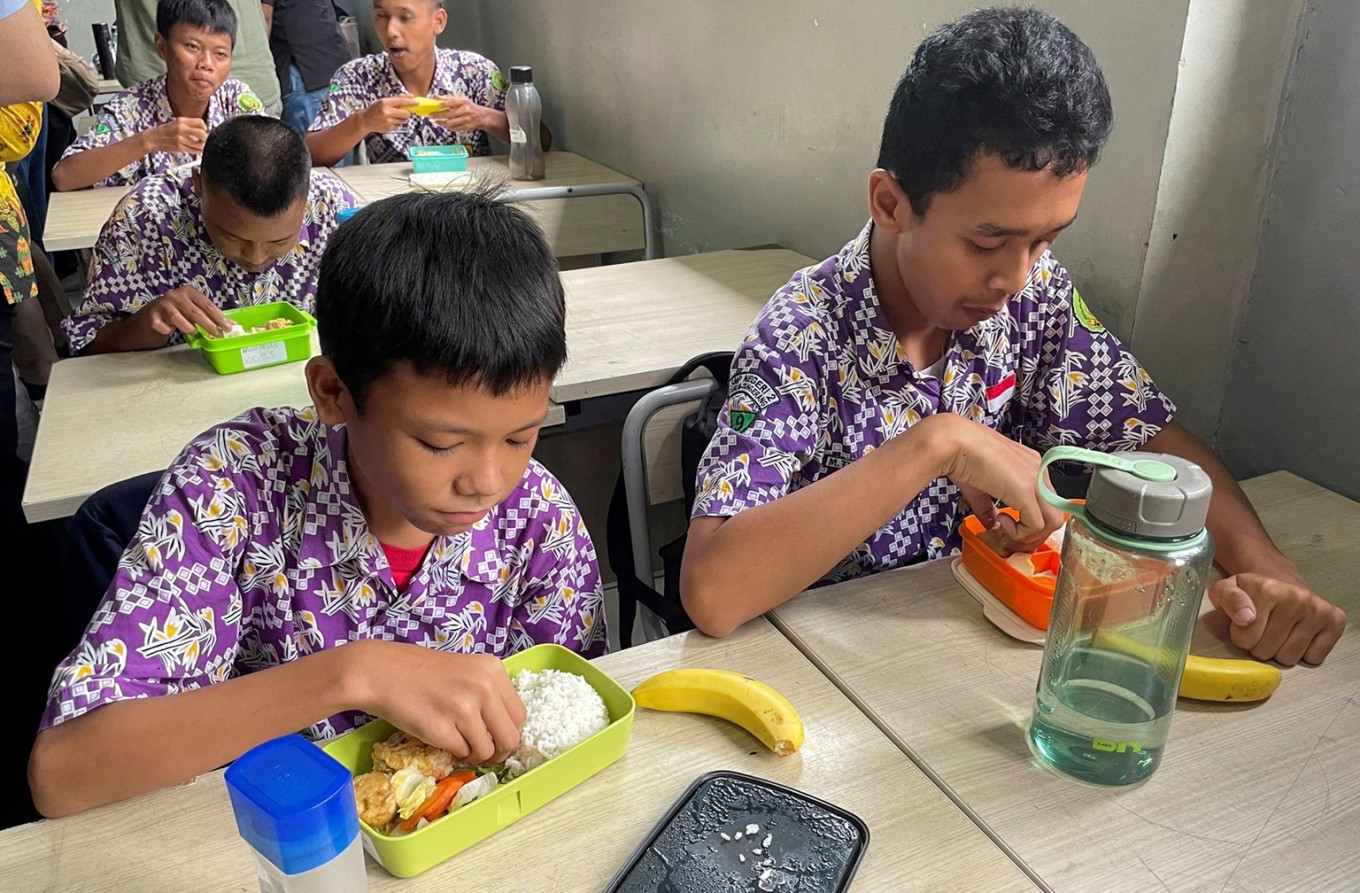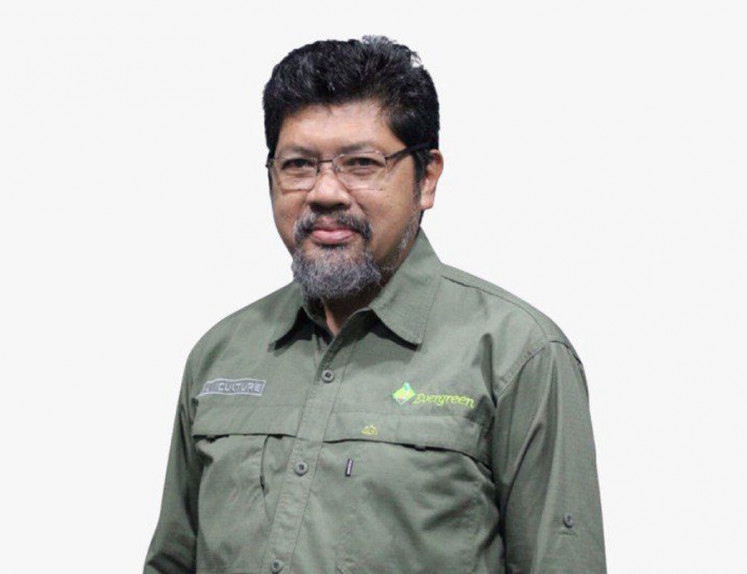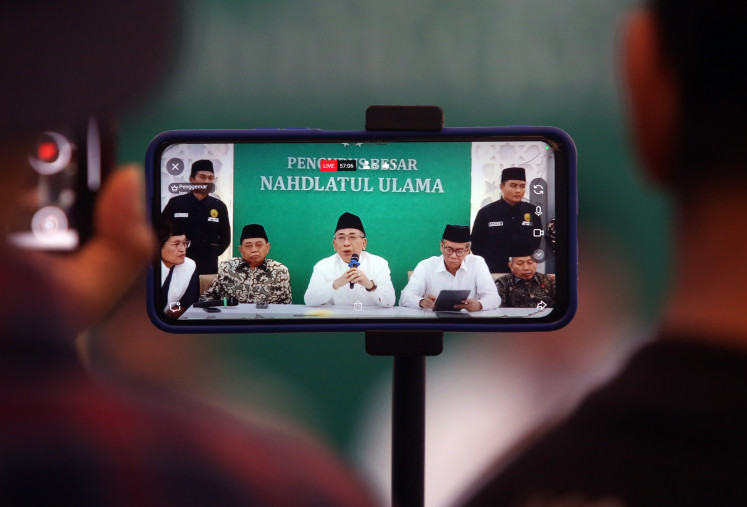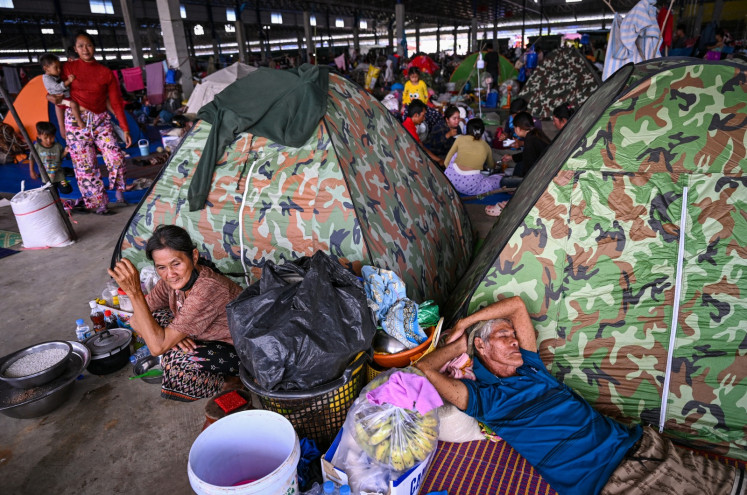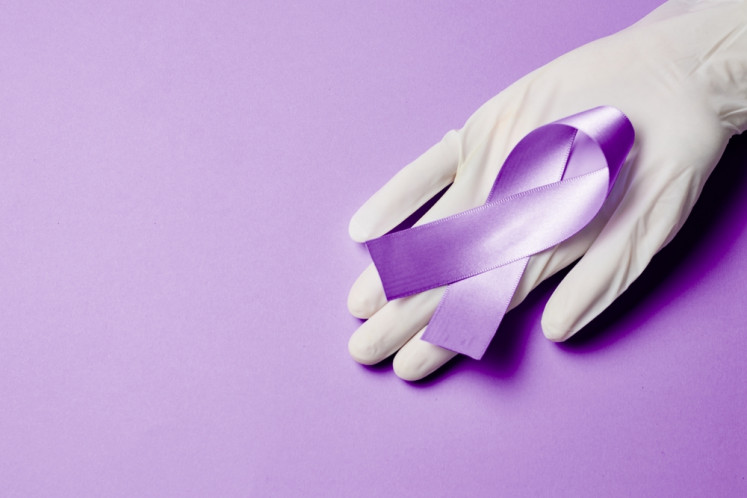Popular Reads
Top Results
Can't find what you're looking for?
View all search resultsPopular Reads
Top Results
Can't find what you're looking for?
View all search resultsAnalysis: Doubts cast over nutritional quality of Prabowo’s free meals program
Change text size
Gift Premium Articles
to Anyone
W
ith the succession of national leadership fast approaching, the realization of president-elect Prabowo Subianto’s flagship free meals program is facing an arduous challenge. Due to budget constraints, several adjustments will have to be made to the original plan, which may compromise the program’s intended purpose.
To woo voters during his presidential campaign, Prabowo promised to provide free nutritious meals for almost 83 million Indonesians, including students, santri (Islamic boarding school students) and pregnant women. On the surface, the program has great potential to address malnutrition and inequality across the country. However, the substantial budget and logistics required to implement this signature program raise questions about its feasibility.
Thus far, the Finance Ministry has allocated Rp 71 trillion (US$4.4 billion) from the 2025 state budget for the free meals program. President Joko “Jokowi” Widodo established the National Nutrition Agency through a presidential regulation (Perpres) last month and appointed IPB University entomologist Dadan Hidayana as its head. This new agency will not only oversee the implementation of the free meals program set to kick off on Jan. 2, 2025, but also foster healthier lifestyles among Indonesians.
Trial runs for the program are currently underway in several cities. The Jakarta administration, for one, has distributed more than 5,000 free nutritious meals in several elementary schools. The program has also been trialed in several elementary schools in Kulon Progo regency, Yogyakarta, initiated by private ride-hailing company Grab and digital payment platform OVO.
While the organizational structure and work plan of the agency is being finalized, Dadan mentioned that it is considering other sources of funding for the program. One suggestion was to involve the private sector, where participating in the free meals program could fulfill a company’s corporate social responsibility (CSR) obligation. Indonesia Strategic and Economic Action Institution senior analyst Ronny P. Sasmita, however, pointed out that not every private company is subject to CSR obligations, and the ones that are subject to them have small fiscal capacities, which may not significantly aid the program. Apart from seeking alternative sources of funding, there has also been talk that the program will not be implemented uniformly across the country on the basis that the ingredients for the free meals would be tailored to each region depending on their respective availability and consumption trends. However, this could also be an excuse to replace certain ingredients with cheaper and more accessible alternatives in order to accommodate budget constraints.
Proposals to replace rice with instant noodles and dairy milk with processed “fish milk”, for example, have raised concerns about the nutritional value of the meals. While some experts have explained that fish milk is a suitable lactose-free alternative high in nutritional value, critics argue that milk is only complementary to a balanced nutritional intake obtained from the direct consumption of animal protein. Nutritionist Nurul Ratna Mutu Manikam added that consuming fish directly would be better for children and more practical than having to be processed into milk. Regardless, the incoming government must ensure there is transparency in the execution of the flagship program. Nutritional quality cannot be sacrificed due to budgetary constraints and funding cannot be carelessly sourced from other sectors only to fulfill a campaign promise that was vague in its conception.
The good news is such a program has been in place in some countries like Finland, Sweden, Brazil and India, allowing Indonesia to learn from their successes and failures.

